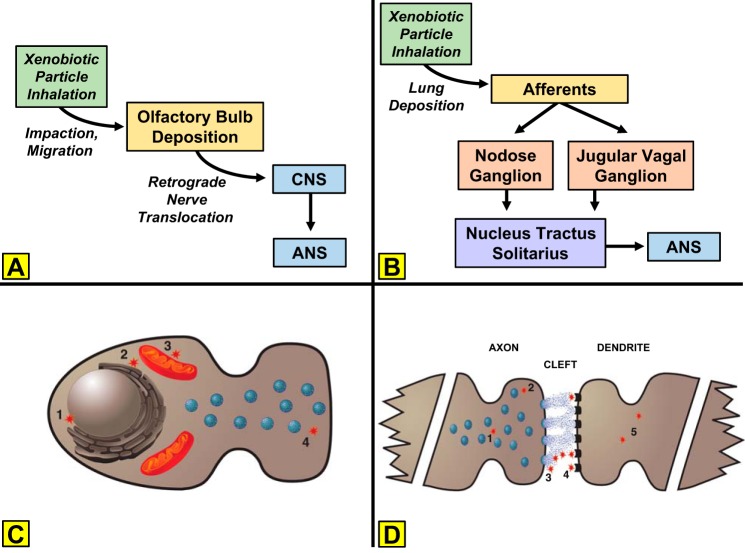Fig. 3.
Autonomic pathways and cellular mechanisms through which inhaled xenobiotic particles act. A: inhaled particles impact in the upper airway, migrate to the olfactory bulb, and may ultimately translocate to the CNS to alter ANS output. B: alternatively, inhaled particles activate pulmonary afferents that project to ganglia of the nucleus tractus solitarius and alter ANS output. C: within a neuron, xenobiotic particles may alter function by interacting with the nucleus (1), endoplasmic reticulum (2), mitochondria (3), and/or vesicle trafficking/tethering (4). D: within the synapse, transmission may be influenced by interrupting vesicle trafficking (1), vesicle tethering and or neurotransmitter release (2), neurotransmitter binding in the synaptic cleft (3), occupying postsynaptic receptors (4), and/or altering dendrite membrane potentials (5).

